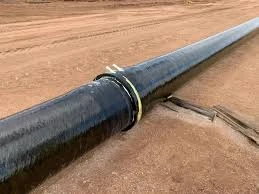
-
 Afrikaans
Afrikaans -
 Albanian
Albanian -
 Amharic
Amharic -
 Arabic
Arabic -
 Armenian
Armenian -
 Azerbaijani
Azerbaijani -
 Basque
Basque -
 Belarusian
Belarusian -
 Bengali
Bengali -
 Bosnian
Bosnian -
 Bulgarian
Bulgarian -
 Catalan
Catalan -
 Cebuano
Cebuano -
 China
China -
 China (Taiwan)
China (Taiwan) -
 Corsican
Corsican -
 Croatian
Croatian -
 Czech
Czech -
 Danish
Danish -
 Dutch
Dutch -
 English
English -
 Esperanto
Esperanto -
 Estonian
Estonian -
 Finnish
Finnish -
 French
French -
 Frisian
Frisian -
 Galician
Galician -
 Georgian
Georgian -
 German
German -
 Greek
Greek -
 Gujarati
Gujarati -
 Haitian Creole
Haitian Creole -
 hausa
hausa -
 hawaiian
hawaiian -
 Hebrew
Hebrew -
 Hindi
Hindi -
 Miao
Miao -
 Hungarian
Hungarian -
 Icelandic
Icelandic -
 igbo
igbo -
 Indonesian
Indonesian -
 irish
irish -
 Italian
Italian -
 Japanese
Japanese -
 Javanese
Javanese -
 Kannada
Kannada -
 kazakh
kazakh -
 Khmer
Khmer -
 Rwandese
Rwandese -
 Korean
Korean -
 Kurdish
Kurdish -
 Kyrgyz
Kyrgyz -
 Lao
Lao -
 Latin
Latin -
 Latvian
Latvian -
 Lithuanian
Lithuanian -
 Luxembourgish
Luxembourgish -
 Macedonian
Macedonian -
 Malgashi
Malgashi -
 Malay
Malay -
 Malayalam
Malayalam -
 Maltese
Maltese -
 Maori
Maori -
 Marathi
Marathi -
 Mongolian
Mongolian -
 Myanmar
Myanmar -
 Nepali
Nepali -
 Norwegian
Norwegian -
 Norwegian
Norwegian -
 Occitan
Occitan -
 Pashto
Pashto -
 Persian
Persian -
 Polish
Polish -
 Portuguese
Portuguese -
 Punjabi
Punjabi -
 Romanian
Romanian -
 Russian
Russian -
 Samoan
Samoan -
 Scottish Gaelic
Scottish Gaelic -
 Serbian
Serbian -
 Sesotho
Sesotho -
 Shona
Shona -
 Sindhi
Sindhi -
 Sinhala
Sinhala -
 Slovak
Slovak -
 Slovenian
Slovenian -
 Somali
Somali -
 Spanish
Spanish -
 Sundanese
Sundanese -
 Swahili
Swahili -
 Swedish
Swedish -
 Tagalog
Tagalog -
 Tajik
Tajik -
 Tamil
Tamil -
 Tatar
Tatar -
 Telugu
Telugu -
 Thai
Thai -
 Turkish
Turkish -
 Turkmen
Turkmen -
 Ukrainian
Ukrainian -
 Urdu
Urdu -
 Uighur
Uighur -
 Uzbek
Uzbek -
 Vietnamese
Vietnamese -
 Welsh
Welsh -
 Bantu
Bantu -
 Yiddish
Yiddish -
 Yoruba
Yoruba -
 Zulu
Zulu
grp pipe
Understanding GRP Pipes Properties, Applications, and Advantages
Glass Reinforced Plastic (GRP) pipes, also known as Glass Reinforced Polymer pipes, are a critical component in various industries, known for their strength, durability, and resistance to corrosion. As infrastructure demands grow, the adoption of advanced materials like GRP is becoming increasingly favorable. This article delves into the essential properties, applications, and advantages of GRP pipes, providing insights for engineers, architects, and decision-makers in construction and water management sectors.
Properties of GRP Pipes
GRP pipes are made from a composite material that combines glass fibers and resin. This unique combination grants them distinct properties that set them apart from traditional materials like steel or concrete.
1. Corrosion Resistance One of the most significant advantages of GRP pipes is their remarkable resistance to corrosion. Unlike metal pipes, which can rust over time, GRP pipes maintain their integrity when exposed to aggressive chemicals, making them ideal for the chemical industry and sewage applications.
2. Lightweight GRP pipes are significantly lighter than their metal counterparts. This is an advantage during transportation and installation, reducing labor costs and increasing efficiency during construction.
3. High Strength-to-Weight Ratio Despite their lightweight nature, GRP pipes boast impressive strength, making them suitable for high-pressure applications. Their design can cater to various pressure ratings, accommodating different operational needs.
4. Longevity GRP pipes have a long service life, often exceeding 50 years with minimal maintenance. Their durability ensures fewer replacements and lower lifetime costs compared to traditional piping systems.
5. Thermal Insulation The thermal properties of GRP also reduce heat loss or gain, making them suitable for systems where temperature control is critical, such as in hot water or chilled water applications.
Applications of GRP Pipes
The versatility of GRP pipes allows them to be used across various sectors
1. Water Treatment and Distribution GRP pipes are widely used in water treatment plants and for drinking water distribution systems due to their non-reactive nature, which prevents leaching of harmful substances.
grp pipe

2. Wastewater Management Their resistance to corrosion and chemicals makes GRP pipes an excellent choice for sewage and industrial waste applications. They can withstand harsh environments without deteriorating.
3. Oil and Gas Sector GRP pipes find applications in transporting hydrocarbons and other fluids due to their lightweight and strong structure, reducing the overall weight of pipeline systems.
4. Construction In construction, GRP pipes are utilized for drainage and stormwater management systems. Their lightweight property eases the handling and installation process, making them a preferred choice for civil engineering projects.
5. Irrigation Systems GRP pipes are increasingly used in agricultural applications for irrigation systems due to their durability and flexibility, which enables them to adapt to various landscape layouts.
Advantages of GRP Pipes
The continued growth in the use of GRP pipes can be attributed to several key advantages
1. Cost-Effective Solutions While the initial cost of GRP pipes may be higher than some traditional materials, their longevity and reduced maintenance requirements translate into lower lifecycle costs, making them economical in the long run.
2. Environmental Impact The production and use of GRP pipes can have a lower environmental impact compared to traditional materials. Their durability means fewer resources are spent on replacements, contributing to sustainability efforts.
3. Ease of Installation The lighter weight of GRP pipes reduces the need for heavy machinery during installation, and their flexibility allows for quicker and easier assembly on-site.
4. Customizability GRP pipes can be manufactured in various diameters and lengths, allowing for customization to fit specific project requirements, enhancing their usability across applications.
In conclusion, GRP pipes represent a modern solution to the challenges faced by traditional piping materials. With their superior properties, broad applicability, and numerous advantages, they stand out as a robust choice for current and future infrastructure development. As industries continue to innovate and seek sustainable materials, GRP pipes are poised to play a pivotal role in shaping efficient and durable systems across the globe.









